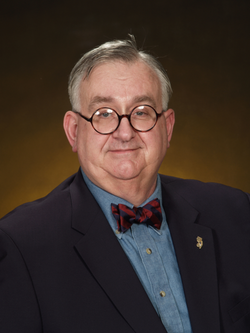This has not been a very good winter out there on the highways for the members of the fire and emergency services worlds. It has also been a winter to forget for our friends in the towing and highway labor industries. It seems as though I have been kept quite busy indeed posting the many line-of-duty deaths and struck-by incidents which have been happening across our nation and around the world.
Like most of you, I have spent a winter fighting the effects of wind, snow, ice, and cabin fever. My solution to the many weather-related problems this year has been to park my carcass in a comfortable reclining chair opposite a really neat large-screen TV. I cannot tell you how many of my problems have been whisked away by a combination of hot coffee and the Turner Classic Movie channel.
Of course, like many of you I have been summoned forth to my local fire station to provide the services demanded by emergencies in the Adelphia Fire Company service area. I have faced a combination of car wrecks, downed wire, carbon-monoxide detectors, fire alarms, and the like. My buddies and I have been called upon to make our way through the snow-covered highways and byways of our fire district.
However, it was our good fortune the other day to be able to enjoy a couple of very rare 60 degree days during the middle of February. I spent some time out on the front porch in my 'thinking place' smoking a couple of cigars and enjoying some of the previously mentioned hot coffee. As I sat there watching the passing parade of traffic on our fairly busy county highway, a few thoughts began to bubble up within the confines of my smoke-induced thinking.
I spent some time watching the cars as they approached the traffic light on the corner about 50 yards from my front door. I lost count on the number of people who were chattering away on the cell phones (in violation of state law). I noted a great many of them start to make the right turn at the entrance to my neighbor's parking lot. This is, of course, not the place, as the right turn is further down the road. But that did not stop these latter-day NASCAR drivers as they sped past their stopped fellow travelers.
The passage of motor vehicles got me thinking. What is it about the interaction of people, traffic, and highway responders and workers that is causing so many people to be struck and killed? After a bit, a question came racing into my brain; a simple question indeed. With regard to incidents on the highway, is it the motorist or is it us? Hence the title of this column: Is it us or is it them?
Let me suggest that there is sufficient blame on both sides of this equation. After working on this issue for well over a decade, I am here to tell you that there are still people on our side of the fence who fail to recognize this issue as a problem for them and their agency. Here are some points to consider:
- How many fire, police, and EMS organizations still do not have highway safety training as part of their educational programs?
- How many fire, police, and EMS organizations still do not have highway safety operational plans in place?
- How many fire, police, and EMS organizations still do not have retro-reflective vests for their people?
- How many fire, police, and EMS organizations still do not enforce the use of retro-reflective public safety vests for their staff?
We here at the Emergency Response Safety Institute (ERSI) and Respondersafety.com are on the verge of a research project to assess the potential for educational programs for the general public. We do not want to move forward with the development of an actual educational package until we can get a handle on the extent of the problem. It is one thing to guess and another to know.
Let me assure you that based upon my personal observations of the traffic out there on Monmouth County Route 524, somebody needs to teach someone something. As one who has spent a number of years ducking and dodging traffic on the local roads in my area, I am here to tell you that something must be done to create an awareness of the dangers of motor vehicle operation in work zones, whether they are of a temporary, emergency nature, or not.
You and I need to do all that we can to attack this problem on both sides of the fence. How can we expect the public to watch out for us, if we fail to take all of the necessary precautions to protect ourselves? While we here at ERSI are working to develop educational programs for the public, we would urge you to train, prepare, and equip your people to operate as safely as possible out on the highways and byways of your operational area. You owe it to your people and their families to ensure that things are done in as safe a manner as possible.
Remember, spring is not far away.


